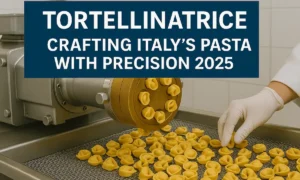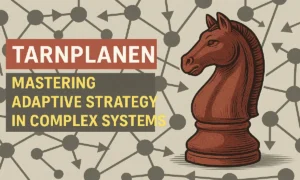Classic cars have an undeniable charm. Their vintage style, the sound of a rumbling engine, and the nostalgia they evoke make them special.
But what happens when you combine these iconic cars with modern technology? The result is an exciting new wave of vehicles known as “restomods” — classic cars updated with the latest advancements in performance, safety, and comfort.
In this article, we’ll dive into how car enthusiasts are blending the best of both worlds: the beauty of classic cars and the power of modern technology. Let’s get started.
What Are Restomods?
The term “restomod” is short for “restoration” and “modification.” It refers to the process of taking a classic car and upgrading it with modern components.
This might include adding new technology, better materials, or more advanced engineering while preserving the original look and feel of the vehicle.
Restomods are not simply restorations that bring cars back to their original state; they are a fusion of the old and the new. This means that while the car may look like a vintage beauty, it will drive and function like a modern machine.
Upgrading a classic car with modern tech can result in a highly functional, reliable, and comfortable vehicle, while still maintaining its classic charm and style.
Why Upgrade Classic Cars with Modern Technology?
There are several reasons why car lovers and collectors choose to upgrade their classic cars. Some upgrades focus on performance, while others improve safety, efficiency, and comfort.
- Improved Performance
Modern engines, brakes, and suspension systems are far superior to what was available decades ago. This means a smoother ride, better handling, and enhanced power. - Better Fuel Efficiency
Classic cars were often gas guzzlers. With modern fuel injection systems, electric motor conversions, or hybrid technology, restomods can significantly improve fuel efficiency, making them more economical to drive. - Enhanced Safety Features
Vintage cars didn’t have airbags, modern crumple zones, or advanced driver assistance systems (ADAS). Adding these features improves safety without sacrificing style.
The ability to install features like anti-lock braking systems (ABS) and rear-view cameras ensures that classic cars can meet modern safety standards. - Comfort and Convenience
Classic cars often lacked air conditioning, Bluetooth connectivity, and even basic creature comforts. With modern upgrades, these vintage rides can offer today’s conveniences, making them more enjoyable to drive. - Environmental Impact
With electric conversions and hybrid options, some classic car owners are choosing to reduce the environmental impact of their beloved vehicles. This trend is growing, especially among those who want to preserve the cars they love while lowering emissions.
By combining modern tech with vintage cars, enthusiasts can enjoy the nostalgic experience while benefiting from today’s innovations.
Read More: Why Kia Engines Use Turbo Technology
Popular Classic Cars with Modern Technology
Many classic cars have become iconic over the years. Here are a few examples of classics that have received the modern technology treatment. These cars showcase how updates can preserve the beauty of the original designs while making them more reliable, efficient, and safe.
1. Ford Mustang (1960s Restomod)
The Ford Mustang is a classic American muscle car that has undergone numerous modern updates. Some restomod versions feature powerful modern V8 engines, upgraded suspensions, and advanced braking systems.
Others incorporate electric powertrains, turning the Mustang into a more eco-friendly yet still thrilling car.
2. Chevrolet Camaro (1969 Restomod)
The 1969 Chevrolet Camaro is one of the most iconic muscle cars in history. Modern versions of this classic have been updated with contemporary engines, fuel systems, and high-performance brakes.
Some Camaro restomods feature digital dashboards, advanced infotainment systems, and even autonomous driving features.
3. Porsche 911 (Classic 1970s)
The Porsche 911 is another classic that has become a popular candidate for restomods. Upgrades typically include more responsive steering, advanced suspensions, and modern engines that improve reliability and fuel efficiency.
Additionally, custom interiors and high-tech audio systems are often added to enhance the driving experience.
4. Jaguar E-Type (1960s Restomod)
The Jaguar E-Type is often referred to as one of the most beautiful cars ever made.
Restomods of this classic British roadster are frequently updated with electric drivetrains, modern climate control systems, and enhanced safety features, allowing enthusiasts to enjoy its beauty with the comfort and reliability of a new car.
5. BMW 2002 (1970s Restomod)
The BMW 2002 is an iconic example of a compact, sporty sedan from the 1970s. A restomod version often includes more powerful engine options, modern suspension systems, and the addition of electric power steering.
Some owners even upgrade the interior to include contemporary seats, Bluetooth connectivity, and climate control.
Read Must: Top 2025 Cars Without Start/Stop Tech: A Driver’s Guide
These restomods offer a glimpse into how classic cars can be transformed with cutting-edge technology without sacrificing their original charm.
The Benefits of Classic Car Restomods
Restomods offer a unique opportunity to enhance the driving experience while maintaining the charm of a classic car. Let’s explore its more features.
1. Reliability
Classic cars, while beautiful, can sometimes be prone to mechanical issues due to their age. Modern technology improves the reliability of these cars, making them more dependable and less likely to break down unexpectedly.
With modern engines and electrical systems, owners can drive with greater confidence and less maintenance.
2. Better Driving Experience
Modern suspension systems, better tires, and more precise steering give restomods a more enjoyable driving experience compared to their original counterparts. What was once a rough, noisy ride can now be smooth, comfortable, and responsive.
Restomods can even include features like adaptive cruise control and modern tire technology to further enhance the experience.
3. Preservation of Classic Design
Restomods allow car enthusiasts to enjoy the look of a classic car without sacrificing the performance and technology of modern vehicles. This means preserving the vintage charm of classic cars while enhancing them for today’s driving conditions.
It’s the best of both worlds — a stylish car with a reliable engine and all the modern perks.
4. Increased Value
A well-done restomod can significantly increase the value of a classic car, especially if it incorporates desirable modern technology. Some restomods become highly sought-after collector’s items, blending nostalgia with innovation.
Cars that blend timeless design with cutting-edge tech can command a premium price in the market.
The combination of classic aesthetics and modern tech helps create cars that are both collectible and highly functional.
Also Visit: Upgrade Your LM7 Engine with a One-Cable Alternator
Challenges of Modernizing Classic Cars
While restomods offer many benefits, the process is not without challenges. Here are some things to keep in mind:
1. Cost
Upgrading a classic car with modern technology can be expensive. Engine swaps, suspension upgrades, and the addition of modern systems can add up quickly.
However, the end result is often a car that is more valuable and enjoyable to drive. Enthusiasts should weigh the costs of upgrading against the long-term benefits.
2. Maintaining the Spirit of the Car
One of the challenges of restomoding is ensuring that the car retains its original character and charm. Too many modifications can strip away what makes the classic car special in the first place.
Finding the right balance between innovation and preservation is key to maintaining the vehicle’s soul.
3. Legal and Environmental Considerations
Depending on where you live, upgrading a classic car with modern tech might require compliance with emissions laws or safety regulations. It’s important to check local regulations to ensure your restomod is street legal.
Additionally, electric conversions may require special attention to battery disposal and recycling.
These challenges can be overcome with careful planning and expert advice.
The Future of Classic Cars with Modern Technology
As electric vehicles (EVs) become more mainstream, the future of restomods is likely to include more electric conversions. Some companies specialize in converting classic cars to electric powertrains, allowing owners to enjoy the car’s original aesthetic while reducing its carbon footprint.
This trend is growing, especially as people seek to keep their beloved cars but still want to align with eco-friendly initiatives.
Additionally, advancements in autonomous driving technology and connected car systems may soon become part of the restomod world.
Imagine classic cars with self-driving capabilities or the ability to connect to your smartphone for smart navigation, entertainment, and diagnostics.
The combination of timeless designs with cutting-edge technology is an exciting area of automotive innovation. The future looks bright for those who want the best of both worlds.
Frequently Asked Questions (FAQ)
What is a restomod?
A restomod is a classic car that has been restored and modified with modern components. These modifications typically include new engines, suspensions, and advanced technology while preserving the original design.
Are restomods worth the investment?
Yes, restomods can increase the value of a classic car by improving its performance, reliability, and overall appeal. However, the cost of upgrades can be significant, so it’s important to assess whether the investment fits your budget and goals.
Can I convert my classic car to electric?
Yes, many companies now offer electric vehicle conversions for classic cars. This allows you to enjoy the beauty of a vintage car while reducing its carbon footprint. However, the process can be expensive.
What are the benefits of modernizing classic cars?
Modernizing classic cars can improve their performance, safety, fuel efficiency, and overall comfort. It also makes these cars more reliable and enjoyable to drive while retaining their classic look.
What’s the most popular classic car for a restomod?
Some of the most popular restomod candidates include the Ford Mustang, Chevrolet Camaro, Porsche 911, and Jaguar E-Type. These cars are beloved for their timeless designs and are often upgraded with modern technology.
How much does it cost to restomod a classic car?
The cost of a restomod depends on the extent of the modifications. Basic upgrades can cost a few thousand dollars, while full restorations with modern engines, suspension systems, and interiors can run into the tens of thousands of dollars.












